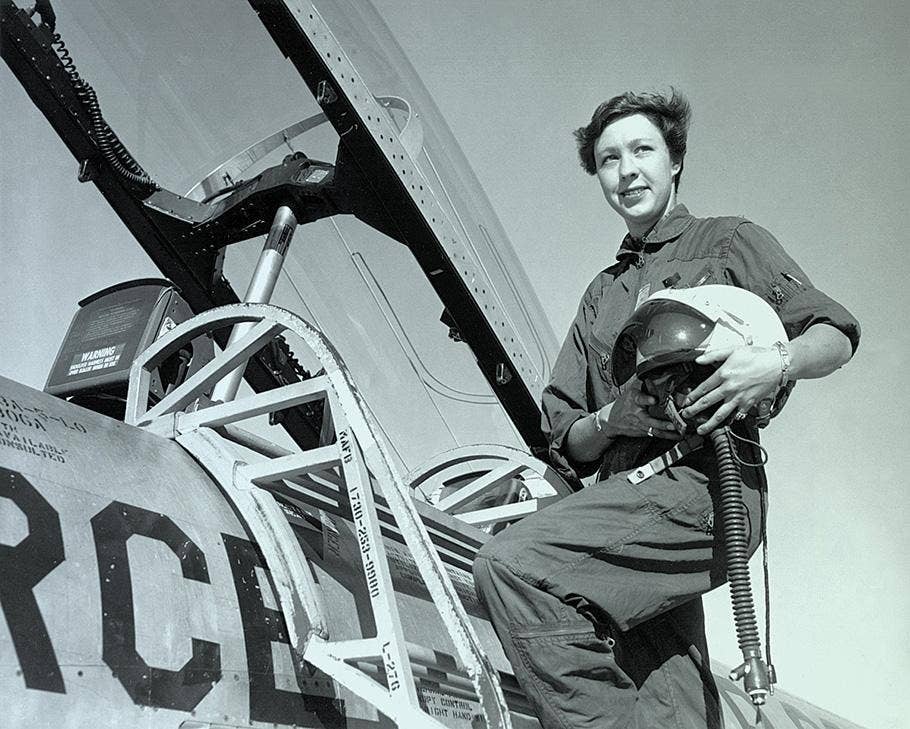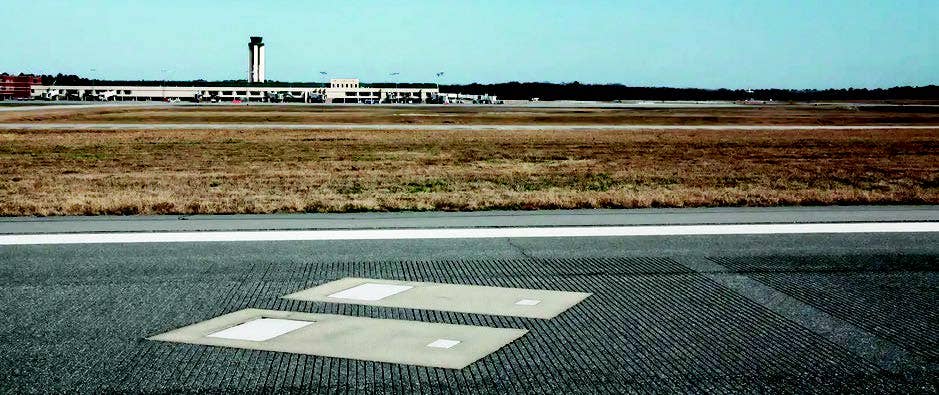Recalling Wright-Patterson Aero Club’s Unfair Demise
A story about flying clubs…and a true hero.

One of the original buildings at Wright Field, from the 1930s, with the original control tower on the left. [Credit: United States Air Force historical photo]
There are probably as many kinds of flying clubs as there are airports (or grass strips) in the country—everything from two or three pilots sharing an airplane to the large clubs I’m writing about. I think the most unique was one created by a guy at Lunken Airport (KLUK) some years ago who sold shares in his “Cub Club.” He had a ratty old J-3 that gullible pilots bought into for a mere $6,000—and there were 12 members! Everything ended when he was giving dual tailwheel instructions to a member, and they broke the Cub. The CFI/club president/registered owner announced there was no insurance, and he wanted to be paid for the damage. As an old friend used to say, “Sooner or later, every crook ends up at the airport.”
The infinitely patient CFI working with me for an instrument rating (yes, it’s still on hold—weather, new avionics installations, annuals, crashes, and trying to learn to use the marvelous gadgetry) is affiliated with probably the best club in this area. After nearly 50 years at Cincinnati’s Blue Ash Airport (formerly KISZ), the “Flying Neutrons” came to roost at Lebanon-Warren County Airport (I68) because Blue Ash was morphed into a suburban park. The club’s curious name originated with the founders—engineers from the nearby GE Aerospace aircraft engine division. The club lost some members who found the new location inconvenient, but it’s back up with 145 members (32 on a waiting list) and six airplanes.
If you're not already a subscriber, what are you waiting for? Subscribe today to get the issue as soon as it is released in either Print or Digital formats.
Subscribe NowWhen it relocated in 2012, other large clubs in the Cincinnati-Dayton area had folded their wings, so the Neutrons picked up members—and some from the Wright-Patterson Aero Club, which had operated at Wright-Patterson Air Force Base since 1954. It boasted more than 325 members, 10 airplanes, its own hangars, maintenance facilities, and offices. This splendid organization certificated many members who went on to train as Air Force pilots. Membership was open to those serving in the U.S. Air Force and Air National Guard, former military, retirees, and the huge civilian population of workers at the base. Prices were reasonable, instruction was excellent, safety standards were high (think CAP on steroids), and the camaraderie was wonderful.
All was well until 2012, when the 53-year-old club was shut down by a new base commander. This person was concerned because the club wasn’t self-sustaining, losing something like $12,000 annually in a few prior years.
Think about the loss of $12,000 in an organization where that sum is commonly written off in the “shrinkage” of paper clips. And closure was especially inappropriate (read: stupid), considering the benefits to the Air Force that it represented. In my FAA days, I’d often visit the club to give practical tests and conduct safety seminars at its monthly meetings. Curiously, I had permission to land at Patterson Field, which boasts a runway 12,300 feet long and 300 feet wide. What fun to fly 2 miles down that runway in a Cub or an Ercoupe when the wind was out of the north. Or land south and make the first turnoff right onto the club ramp. What didn’t make much sense was I couldn’t drive onto the base but had to sign in at the visitors center and wait for an escort.
Note: Wright-Patterson is actually two adjacent but separate airports near Dayton, Ohio. Wright Field is home to the Air Force Institute of Technology and has long been a center of military and general aviation development—from engine improvements to air skin material enhancements and, originally, the shift from biplane to monoplane wings. It also is the site of the National Museum of the U.S. Air Force, which you have to visit (see FLYING’s “Destinations” piece in the June 2023 print edition) Sadly, its runways aren’t used anymore...what fun it would be to land there and visit the museum.
Wright-Patterson was named after Orville and Wilbur Wright and Lieutenant Frank Stuart Patterson, who was killed in an airplane accident testing the new synchronized through-the-propeller machine gun during World War I. The advent of World War II expanded the base’s population from less than 4,000 to well more than 50,000. The club’s hangars were at the north end of Wright-Patterson’s long runway (23R-05L), and a 23R takeoff brings you right over a hallowed and historic site—the Huffman Prairie Flying Field, where the Wright brothers first flew when they returned to Dayton from Kitty Hawk, North Carolina, in late 1903. In 1917, figuring airplanes were here to stay, the Army purchased the adjacent Wright and McCook Fields and created the huge and vital Wright-Patterson AFB on the southeast side of Dayton. Wright-Patt club airplanes accounted for about 70 percent of the takeoffs and landings, typically flying about 450 hours per month.
- READ MORE: Lunken Airport’s Grand Old Lady
But this story wasn’t meant to be a dissertation on flying clubs. I wanted to tell you about a wonderful but unprepossessing, even shy person and real gentleman I came to know at the Wright-Patt club. Retired Lieutenant Colonel William J. “Dixie” Sloan was an instructor and could often be found flying or trading stories with other “old hands” around the club. Sloan invited me for a ride in the Wright Flyer replica and, even though it had a VW engine and three-point safety belts, it somehow made you feel like you were in the original model. Curiously, insurance demanded that after we flew down the length of that long runway, we land and turn it around on the ground for the return trip. And when I took an SNJ (really an AT-6) to the base for a T-6 fly-in, Bill and I walked the ramp as I marveled at the 40 or 50 privately owned AT-6s. I heard him say, very quietly, “I remember when this ramp was full of these airplanes.”
Only after he died in 1999 and was buried at Arlington National Cemetery in Virginia did I find out Sloan was a genuine hero. Earning his wings in 1942 at Kelly Field in San Antonio, he was soon flying P-38 combat missions. In the first nine months of 1943, he was credited with the destruction of 12 enemy aircraft in North Africa and later flew 50 missions in C-54 transports during the Berlin Airlift in 1948-49.
His Distinguished Flying Cross citation reads (I’m paraphrasing): The president awards the Air Force Cross to Lieutenant Colonel (then First Lieutenant) Sloan for extraordinary heroism against an enemy, leading a flight of P-38 aircraft escorting 36 B-25 bombers. Attacked by 10 fighters, he shot down two and drove the rest away. His extraordinary heroism, superb airmanship, and aggressiveness reflects the highest credit upon himself and the United States Armed Forces.
As with Joe Kittinger, I realized that I had again been in the company of a true hero.
This article first appeared in the July 2023/Issue 933 print edition of FLYING.

Subscribe to Our Newsletter
Get the latest FLYING stories delivered directly to your inbox







